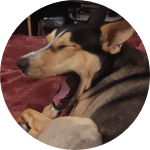802
0
2
References
- 1. Kumpulainen, P., Cardó, A. V., Somppi, S., Törnqvist, H., Väätäjä, H., Majaranta, P., Gizatdinova, Y., Hoog Antink, C., Surakka, V., Kujala, M. V., Vainio, O., & Vehkaoja, A. (2021). Dog behaviour classification with movement sensors placed on the harness and the collar. Applied Animal Behaviour Science, 241, 105393. https://doi.org/10.1016/j.applanim.2021.105393
- 2. Vehkaoja, A., Somppi, S., Törnqvist, H., Valldeoriola Cardó, A., Kumpulainen, P., Väätäjä, H., Majaranta, P., Surakka, V., Kujala, M. V., & Vainio, O. (2022). Description of movement sensor dataset for dog behavior classification. Data in Brief, 40, 107822. https://doi.org/10.1016/j.dib.2022.107822
Please wait...
About This Project
Edge machine learning refers to the process of running embedded ML models on site using devices capable of collecting, processing, and recognizing patterns within collections of raw data. This project seeks to train one of such devices (Nicla SenseME) with dog data from the Earth Species' Bio-logger Ethogram Benchmark (BEBE). The board will be used as a smart dog collar, with its ML inferences controlling haptics vibrations in a bracelet wore by a person.

Browse Other Projects on Experiment
Related Projects
From Pixels to Protection: Assessing the Utilization of AI in Underwater Video Analysis for Marine Protected Areas
This project, partially funded by Sea Grant California, uses Baited Remote Underwater Video to study fish...
Coral Collective: Advancing Coral Resiliency with AI Software
Coral Collective uses AI-powered monitoring to support coral reef conservation. Our platform analyzes coral...
Why do distantly related bird species respond to one another's vocalizations?
The project primarily focuses on identifying specific acoustic signatures that trigger responses from congeneric...



